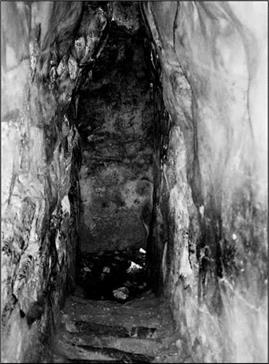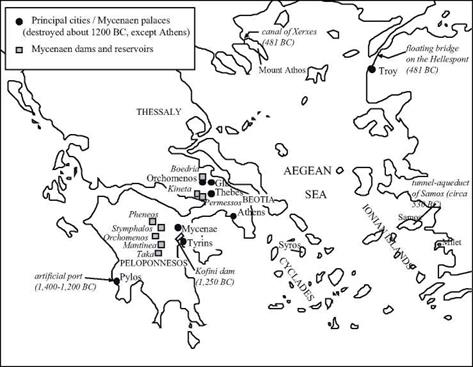Urban hydraulics in the Mycenaen palaces
The centers of Mycenaen power are in strongly fortified palaces (Figure 4.6), with an architecture that has been described as cyclopean due to its use of huge stone blocks. At Mycenae in the palace of Agamemnon, at Pylos homeland of Nestor, and at Tiryns, one finds bathing rooms equipped with permanent bathtubs of terra cotta that sometimes
|
Figure 4.6 Sites of the great hydraulic developments in the Greek world before Alexander. |
were equipped with a drain. Complex systems of drainage sewers in the floors of the palace drained both rainwater and wastewater, including water from the bathing rooms. At Pylos, stone drains collect wastewater and dump it into collectors large enough for a
man to stand in.[148]
Like the Cretans, the Mycenaens bring water to their palaces using aqueducts. At Pylos, it is thought that a two-kilometer aqueduct brings spring water to the palace; part of the aqueduct is made of terra cotta in the shape of a U; another part is made of wood; and
 yet another part is incised into the rock. At Mycenae, an underground cistern is accessed from the citadel by going down three flights of stairs that pass under the outer enclosure wall. This cistern is fed by a rock tunnel that brings distant spring water to it (Figure 4.7).[149]
yet another part is incised into the rock. At Mycenae, an underground cistern is accessed from the citadel by going down three flights of stairs that pass under the outer enclosure wall. This cistern is fed by a rock tunnel that brings distant spring water to it (Figure 4.7).[149]
Figure 4.7 The underground cistern of the palace of Mycenae (photo by the author).







Leave a reply